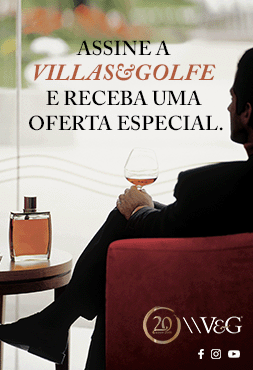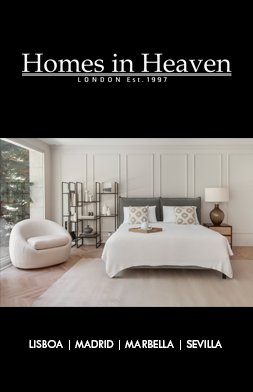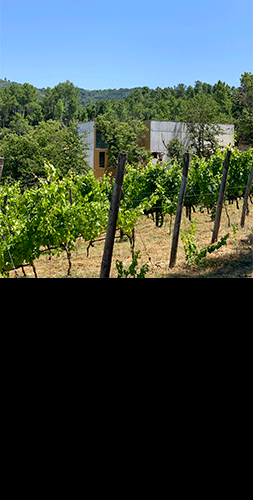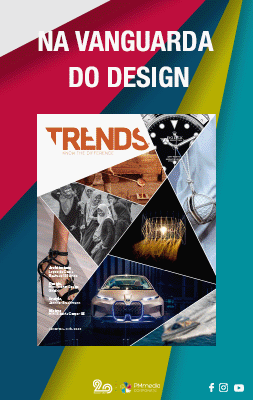
At 17, she started studying Biology. It was at
this time that she discovered descriptive geometry, which attracted her to
architecture. In 1979, she started studying Fine Arts. However, it was during
the five intense years of her architecture degree that Paula Moucheira felt the
most at home. She began her career at the Tec-Tur studio, which focussed on
luxury projects. Later, she was self-employed for 15 years. And in 2008, there
was a turning point. The architect joined the family business (the company was
founded in the 1940s) and Formas de Pedra came into being, dedicated to marble
extraction. The result is design pieces in colours such as grey, brown, pink
and black. And a variety of unique products. Here is the company’s CEO.
When did Paula’s life story merge with the story of Formas de Pedra?
This story, told up until 2008, continues with two very decisive facts. Firstly, the lack of architectural commissions, a consequence of the financial situation in the country and in the Western world, which led to a lack of confidence and a crisis in the construction industry. Secondly, the reorganisation of assets in my father’s family due to inheritance issues. In this new reality, I was called upon to be present and to be part of a new marble extraction company: this is how Formas de Pedra came about.
The company is specialised in marble extraction. What qualities do we find in Formas de Pedra that set it apart from other companies in the sector?
Formas de Pedra came about with one concern and my second biggest challenge: to take care of all the marble extracted, giving it its due value and helping to change quality standards, adding value through design, new uses and thinking up new products. This is what justifies the name we chose. This is why Formas de Pedra stands out from other companies in the sector.
The quarry is located in Pardais, Vila Viçosa. The marble from this area is characterised by its fine crystallisation and the inclusion of other minerals which are expressed in colours such as greys, browns, pinks and blacks. It is very important to be aware that marble is a metamorphic rock, which changes over the millennia, always integrating what is around it and within the mineral masses, as it follows the tectonic movements of the earth’s crust. And the process of breaking up the banks of rock allows these movements of metamorphosis to be seen. It is from this understanding of this natural resource and its richness that the concern arises to convey this beauty and to break down pre-established standards, such as quality criteria and the purity of colour. These standards are the result of a lack of understanding on the part of the people selling it, consumers and often the people who extract this raw material, because they don’t have the strength to create trends and value what they take from the earth.
In order to ensure quality and premium service to customers, we need to be equipped with technology and innovation. Is this the case with your company?
Technology, yes, but always to extend the life of the equipment as much as possible, for obvious reasons: cost of acquisition and cost of maintenance. Innovation, yes, but always in relation to the attitude towards quarrying and the reluctance to discard marble because it is "ugly", because it mixes colours, knowing that this rejection of the raw material accounts for 70%, on average, of the marble extracted.
Tell us about the new covering, VEINSTONE, what is so different about it?
VEINSTONE was a project that responded to the problem of the time, in 2014, when clients rejected marble with dark veins. Faced with this problem, we came up with the answer: if you don’t like dark veins, fine, we’ll remove the veins! And, identifying the natural pattern, we cut into the surface, cancelling out the presence of these dark veins, creating a bas-relief on the surface of the marble and respecting its natural pattern. The project was developed with the help of a materials laboratory, Frontwave, and then registered as an industrial model.
«Nature gives us so much, in a surprising way»
When did Paula’s life story merge with the story of Formas de Pedra?
This story, told up until 2008, continues with two very decisive facts. Firstly, the lack of architectural commissions, a consequence of the financial situation in the country and in the Western world, which led to a lack of confidence and a crisis in the construction industry. Secondly, the reorganisation of assets in my father’s family due to inheritance issues. In this new reality, I was called upon to be present and to be part of a new marble extraction company: this is how Formas de Pedra came about.
The company is specialised in marble extraction. What qualities do we find in Formas de Pedra that set it apart from other companies in the sector?
Formas de Pedra came about with one concern and my second biggest challenge: to take care of all the marble extracted, giving it its due value and helping to change quality standards, adding value through design, new uses and thinking up new products. This is what justifies the name we chose. This is why Formas de Pedra stands out from other companies in the sector.
The quarry is located in Pardais, Vila Viçosa. The marble from this area is characterised by its fine crystallisation and the inclusion of other minerals which are expressed in colours such as greys, browns, pinks and blacks. It is very important to be aware that marble is a metamorphic rock, which changes over the millennia, always integrating what is around it and within the mineral masses, as it follows the tectonic movements of the earth’s crust. And the process of breaking up the banks of rock allows these movements of metamorphosis to be seen. It is from this understanding of this natural resource and its richness that the concern arises to convey this beauty and to break down pre-established standards, such as quality criteria and the purity of colour. These standards are the result of a lack of understanding on the part of the people selling it, consumers and often the people who extract this raw material, because they don’t have the strength to create trends and value what they take from the earth.
In order to ensure quality and premium service to customers, we need to be equipped with technology and innovation. Is this the case with your company?
Technology, yes, but always to extend the life of the equipment as much as possible, for obvious reasons: cost of acquisition and cost of maintenance. Innovation, yes, but always in relation to the attitude towards quarrying and the reluctance to discard marble because it is "ugly", because it mixes colours, knowing that this rejection of the raw material accounts for 70%, on average, of the marble extracted.
Tell us about the new covering, VEINSTONE, what is so different about it?
VEINSTONE was a project that responded to the problem of the time, in 2014, when clients rejected marble with dark veins. Faced with this problem, we came up with the answer: if you don’t like dark veins, fine, we’ll remove the veins! And, identifying the natural pattern, we cut into the surface, cancelling out the presence of these dark veins, creating a bas-relief on the surface of the marble and respecting its natural pattern. The project was developed with the help of a materials laboratory, Frontwave, and then registered as an industrial model.
«Nature gives us so much, in a surprising way»












